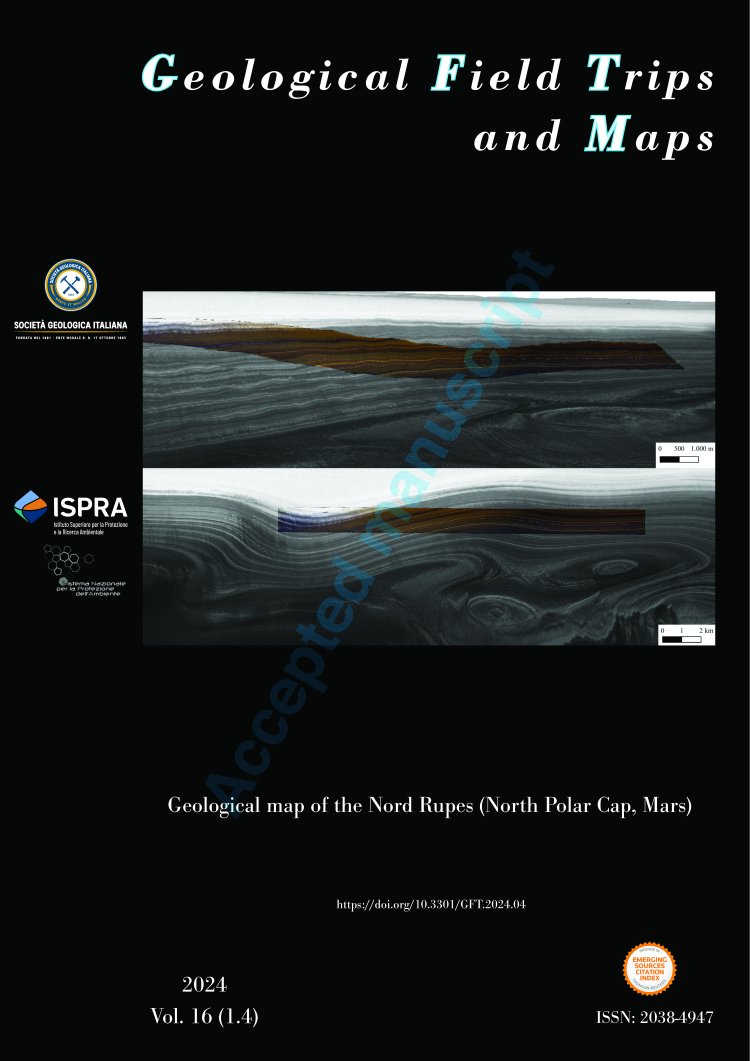
Volume 16 (1.4)/2024
Geological Field Trips and Maps Geological map of the Nord Rupes (North Polar Cap, Mars)
DOI: https://doi.org/10.3301/GFT.2024.04 - Pages: 1-17
Nicole Costa1, Matteo Massironi1,3, Luca Penasa2, Sabrina Ferrari1, Riccardo Pozzobon1,3 & Jacopo Nava1
1Dipartimento di Geoscienze, Università degli Studi di Padova, Via Gradenigo 6, 35131 Padova (PD), Italy.
2Osservatorio Astronomico di Padova (OAPD), Istituto Nazionale di Astrofisica (INAF), Vicolo dell'Osservatorio 5, 35122
Padova (PD), Italy.
3Centro di Ateneo di Studi e Attività Spaziali "Giuseppe Colombo" (CISAS), Università degli Studi di Padova, Via Venezia 15, 35131 Padova (PD), Italy.
Corresponding author e-mail: nicole.costa@studenti.unipd.it
2Osservatorio Astronomico di Padova (OAPD), Istituto Nazionale di Astrofisica (INAF), Vicolo dell'Osservatorio 5, 35122
Padova (PD), Italy.
3Centro di Ateneo di Studi e Attività Spaziali "Giuseppe Colombo" (CISAS), Università degli Studi di Padova, Via Venezia 15, 35131 Padova (PD), Italy.
Corresponding author e-mail: nicole.costa@studenti.unipd.it
Abstract
The geology of Martian Polar Caps provides details about depositional rates of dust and ices correlated with the present or past climate of the planet. Up to date, the North polar dome has been studied mainly at regional scale using spectral and radar data, but detailed stratigraphic studies are still very limited and, in any case, not coupled with geological maps.
At the edge of the Martian North Polar Cap (86°N 233°E) a 500 m- high upwind scarp between Boreales Scopuli and Olympia Rupes well exposes the upper sequences of the North Polar Layered Deposits (NPLD*) revealing a layered and laterally continuous sequence of icy and dusty strata.
Using CRISM, SHARAD, CTX and HiRISE* data, we recognised and mapped several geological units along the scarp and interpreted their morphological, spectral and stratigraphic characters. In addition, SHARAD radargrams were employed to correlate radar reflectors in the subsurface with the outcropping geological units and, consequently, to produce the geological sections complementing the geologic map (scale 1: 70.000). This approach demonstrated for the first time that the surficial composition and stratigraphy of the NPLD valley can accurately match the variation in radar backscatter of subsurface radargrams.
Keywords
